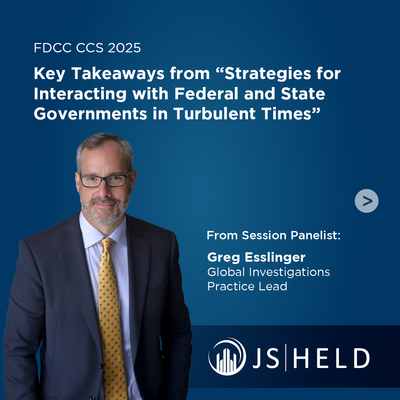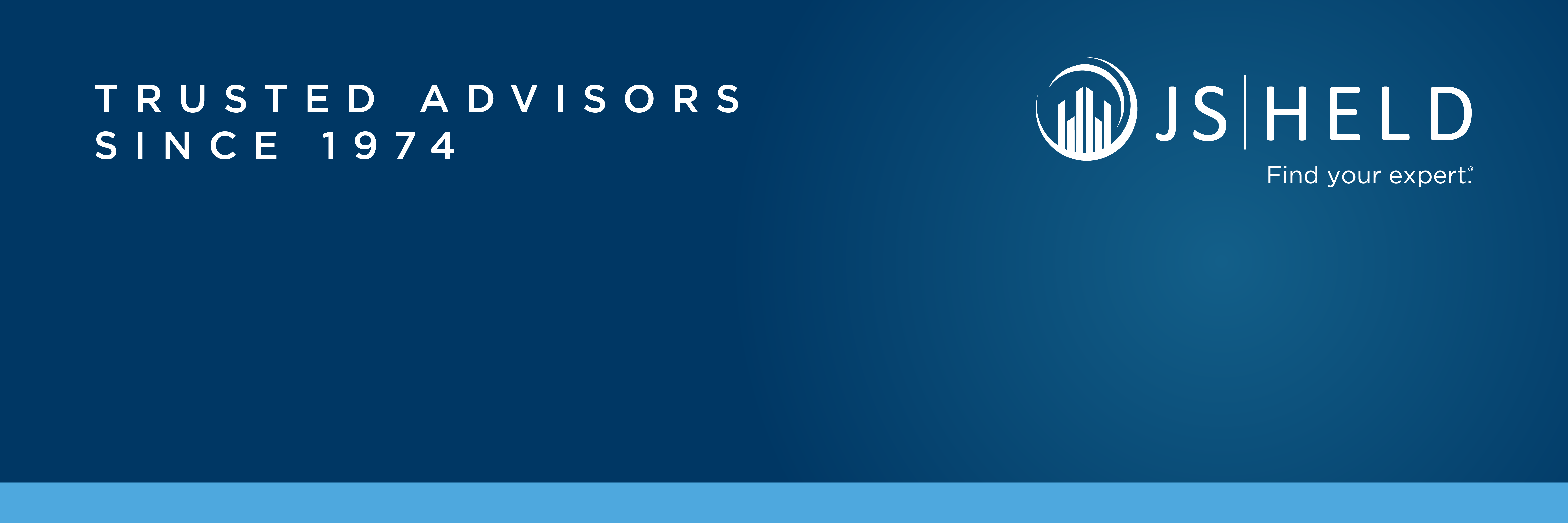You might also like...
Check out some other posts from J.S. Held LLC

Global consulting firm J.S. Held reveals the “Lending Climate in America” survey results from Phoenix Management, a part of J.S. Held. The fourth quarter survey results highlight the persisting lender views on policy decisions and their national/global impacts.
The “Lending Climate in America” survey is administered quarterly to lenders from various commercial banks, finance companies, and factors across the country. We collect, tabulate, and analyze the results to create a complete evaluation of national attitudes and trends.
Phoenix’s Q4 2025 “Lending Climate in America” survey asked lenders which factors could have the strongest potential to impact the economy in the upcoming six months. Forty-six percent of lenders think political uncertainty will have the strongest impact on the economy, while 41% of lenders believe geopolitical risk (war) has the strongest potential to impact the economy. Lenders continue to believe that the possibility of a U.S. recession and upcoming FOMC interest rate decisions will impact the economy.
Lenders revealed what actions their customers may take in the next six months. Almost two-thirds of the surveyed lenders believe their customers will raise additional capital, while 30%+ of the surveyed lenders believe their customers will introduce new products and make acquisitions.
Forty-three percent of respondents identified the retail trade industry as the most likely to experience volatility in the next six months, followed by the healthcare (social assistance) industry at 38% of respondents.
Additionally, Phoenix’s “Lending Climate in America” survey asked lenders if their respective institutions plan to tighten, maintain, or relax their loan structures for various sized loans. For larger loan structures (greater than $25M), the plan to maintain loan structures remained relatively constant from Q3 to Q4, increasing by 9%. As loan sizes decrease, lenders plan to maintain their loan structures. Loans in the range of $15-25M and $5-15M saw very similar structure changes from Q3 to Q4. Loans under $5M had no change in structure.
Lender optimism in the U.S. economy decreased for the near term, moving from 2.58 in Q3 2025 to 2.38. In this current quarter, there is heavy expectation of a B level performance (49%), with a majority of the remainder (41%) sitting at a C level. Lender expectations for the U.S. economy’s performance in the longer term also decreased from 2.71 to 2.46. Of the lenders surveyed, 54% believe the U.S. economy will perform at a B level during the next twelve months, virtually no change from the prior quarter. Performance expectations at the D level increased by 5%, matching the increase at a C level.
To see the full results of Phoenix’s “Lending Climate in America” Survey, please visit:
“Lenders are signaling heightened caution as political uncertainty and geopolitical risks dominate near-term economic concerns,” says Michael Jacoby, Senior Managing Director and Strategic Advisory Practice Lead at J.S. Held. “Confidence in the U.S. economy continues to erode, with short-term grades slipping from a weighted average of 2.58 in Q3 to 2.38 in Q4, and long-term expectations following the same downward trend. While most lenders plan to maintain current loan structures, a notable 21% anticipate tightening terms, even as 77% expect further Fed rate cuts in the coming months. Industry volatility is projected to rise sharply in healthcare, consumer products, and finance, underscoring a challenging environment for borrowers and investors alike.”
To learn more about how our experts can add value to your stories in development, simply connect with Michael through his icon below.

J.S. Held proudly celebrates the numerous industry and expert recognitions earned throughout 2025. As a global consulting firm, J.S. Held continues to be acknowledged for its deep financial, technical, and scientific expertise, with leading outlets highlighting the firm’s capabilities across investigations, risk advisory, forensics, turnaround and restructuring, business intelligence, and litigation support. The firm’s curated team of entrepreneurs — each with an unrivaled understanding of both tangible and intangible assets — reflects a collective strength that is recognized worldwide.
Beyond organizational achievements, J.S. Held’s experts received individual distinctions that further demonstrate their standing as leaders within their respective fields. Industry publications and ranking bodies honoured these specialists for excellence in arbitration, construction and engineering, environmental consulting, forensic accounting, investigations, litigation support, intellectual property, specialty finance, and a wide range of other highly specialized domains.
Together, these recognitions underscore J.S. Held’s commitment to delivering trusted insight and unparalleled expertise as clients navigate increasingly complex challenges. In a rapidly evolving business landscape, the firm remains dedicated to providing informed, innovative, and practical solutions that enable organizations to move forward with confidence.
Click on the link below to learn more about our recognition and respective areas of expertise:
Expert recognition by notable organizations serves as a further testament to J.S. Held's agile, collaborative, creative, and client-centric team, reflecting the trusted advisor role the firm has earned over the last 50 years.
For any media inquiries, contact:
Kristi L. Stathis, J.S. Held
+1 786 833 4864
Kristi.Stathis@JSHeld.com

From foreign investment scrutiny to trade fraud enforcement, shifting federal and state priorities are reshaping corporate compliance.
At the Federation of Defense & Corporate Counsel (FDCC) 2025 Corporate Counsel Symposium (CCS) in Chicago, J.S. Held compliance, risk, and investigations expert Greg Esslinger joined a panel to discuss 'Strategies for Interacting with Federal and State Governments in Turbulent Times,' focusing on the current climate for mergers, acquisitions, and corporate compliance.
Below, he shares key takeaways from the session designed to help businesses refine their M&A techniques, navigate high-stakes transactions and investigations, and realize value amid global government shifts.
REGULATORY EXPECTATIONS ARE SHIFTING QUICKLY Government agencies are adjusting their enforcement priorities, with increased scrutiny on foreign investments, beneficial ownership, and emerging areas like healthcare fraud, sanctions and tariffs, and foreign terrorist organizations (FTOs). M&A REQUIRES STRATEGIC RISK MANAGEMENT In today’s volatile regulatory climate, mergers, acquisitions, and joint ventures demand enhanced due diligence. Tariffs, supply chain disruptions, and national security concerns are reshaping how companies value and structure deals. MULTI-JURISDICTIONAL OVERSIGHT IS INCREASING State and international enforcement and regulatory agencies are ramping up efforts, bringing heightened attention to data privacy, private litigation, whistleblower actions, and cross-border investigations, which carry potential reputational and financial risk. INVESTIGATIONS DEMAND AGILITY AND FORESIGHT As enforcement priorities shift across areas like customs, healthcare, and workplace equity initiatives, companies face growing exposure to government inquiries. Preparation and adaptability are key to mitigating risk. For more information about J.S. Held's investigations and compliance consulting expertise:
To explore the topic further, simply connect with Greg through his icon below.





